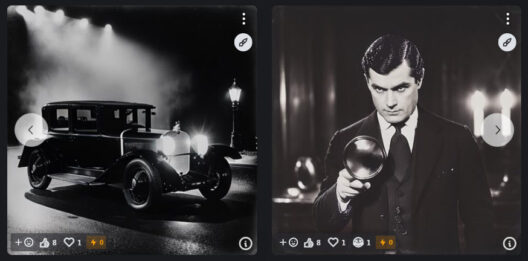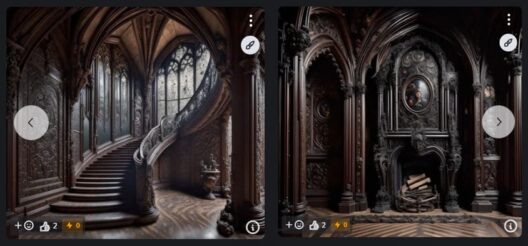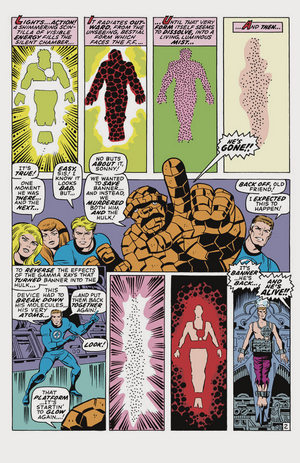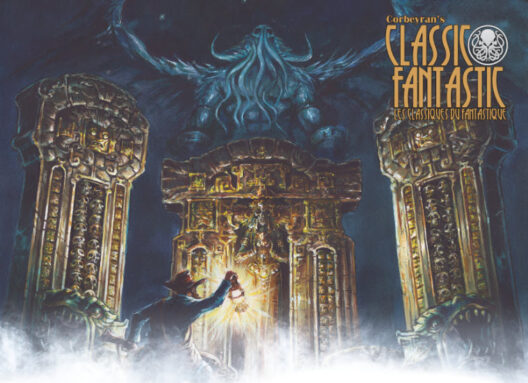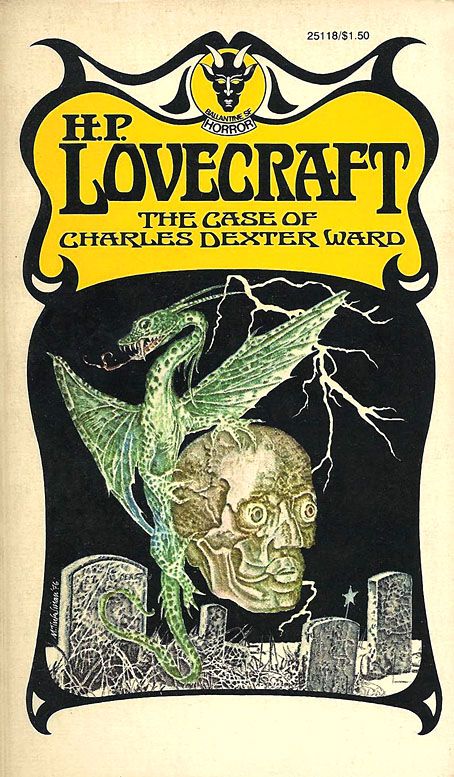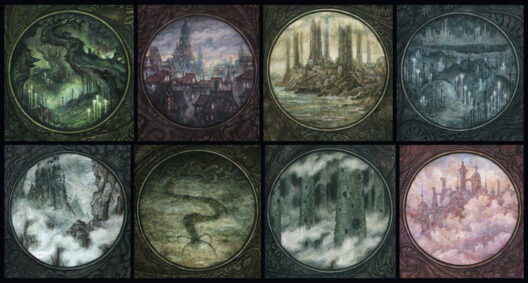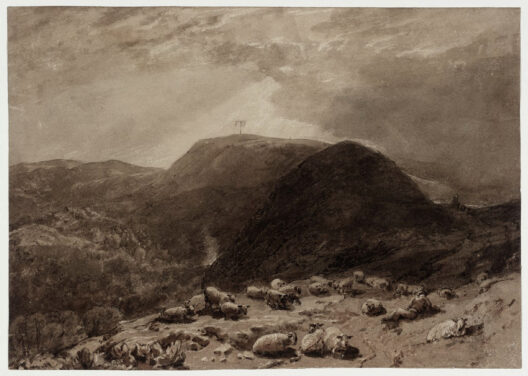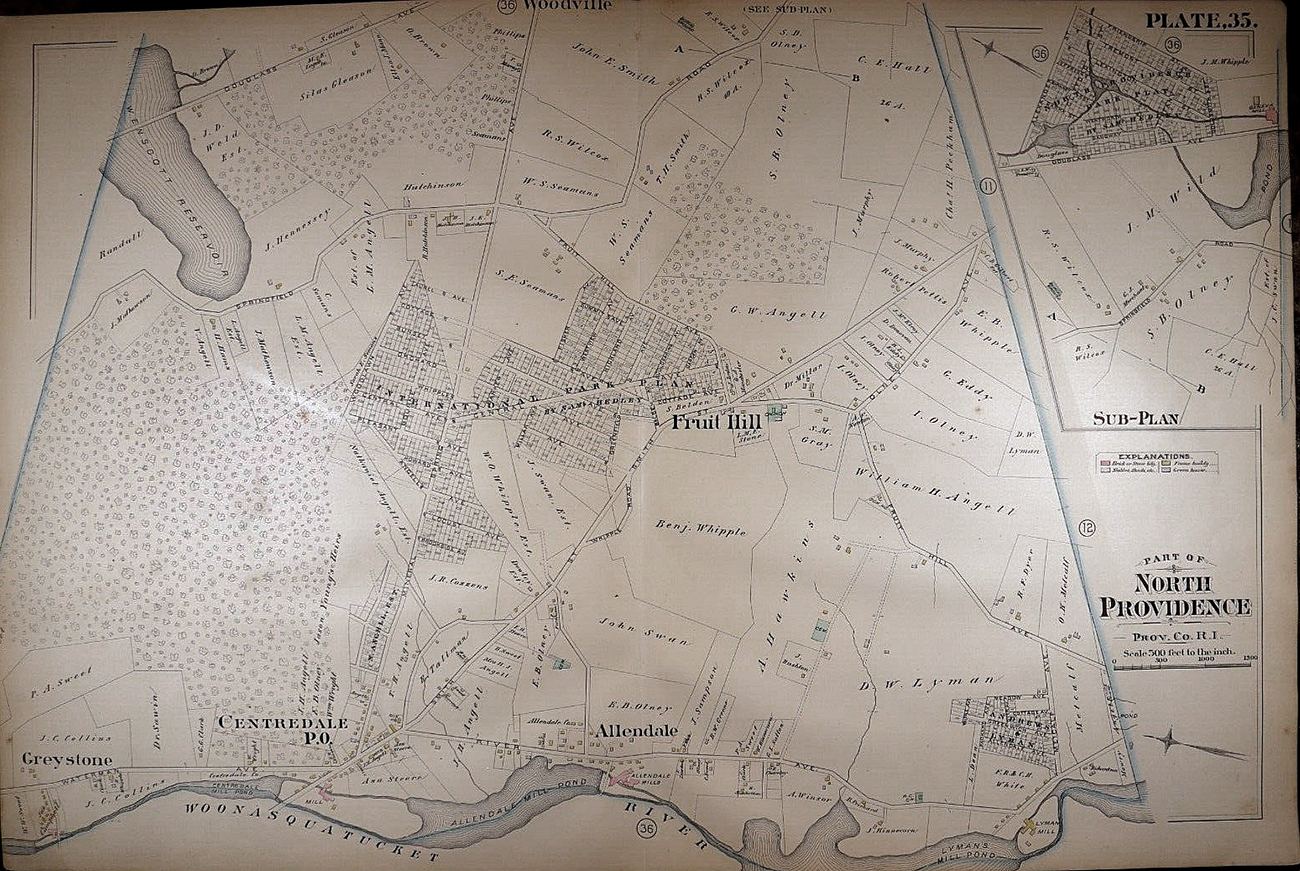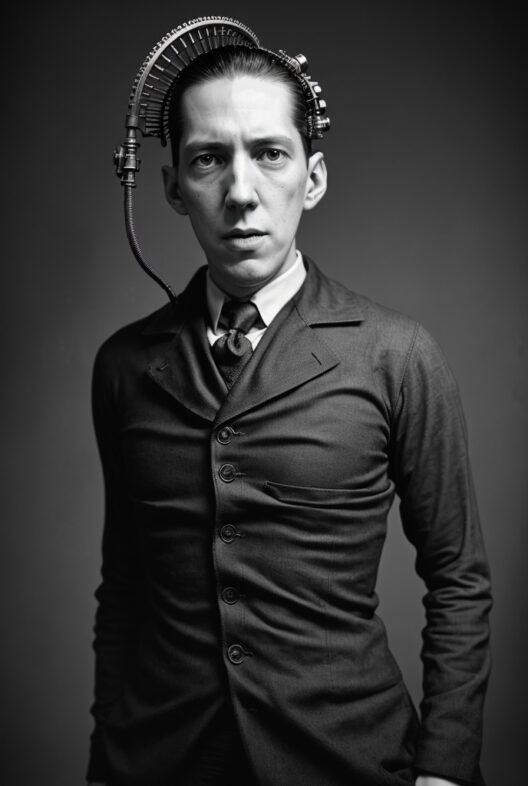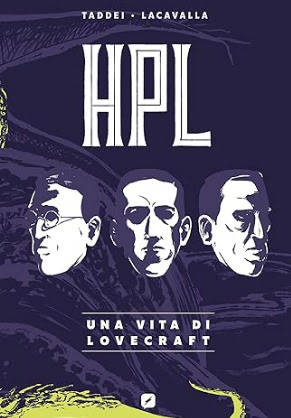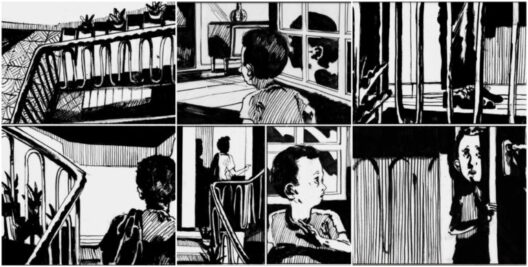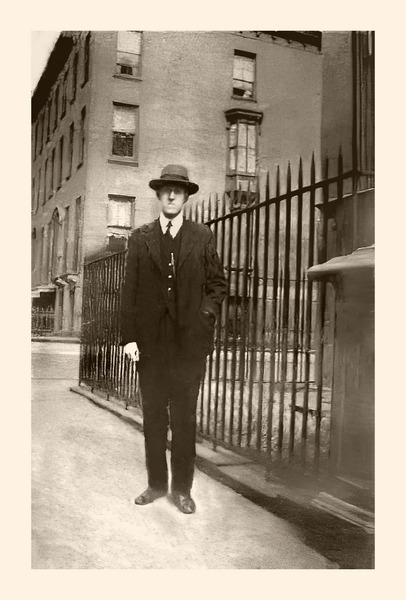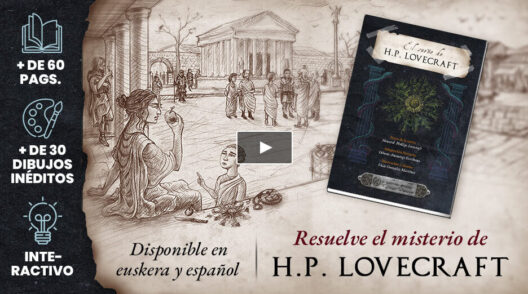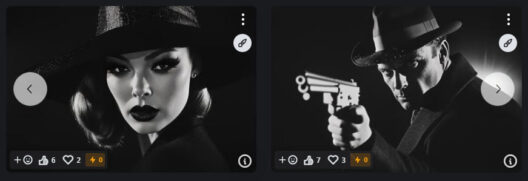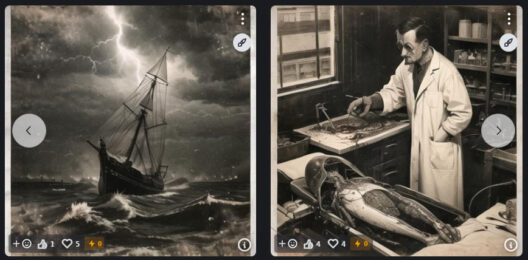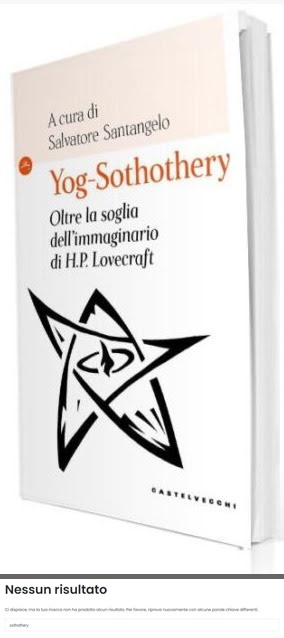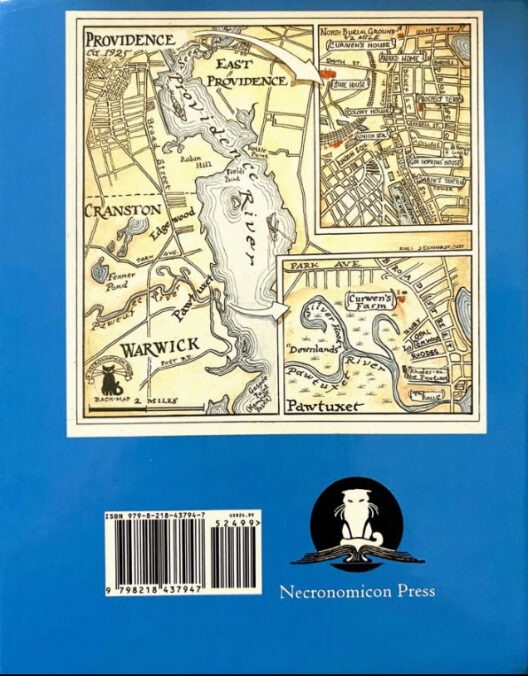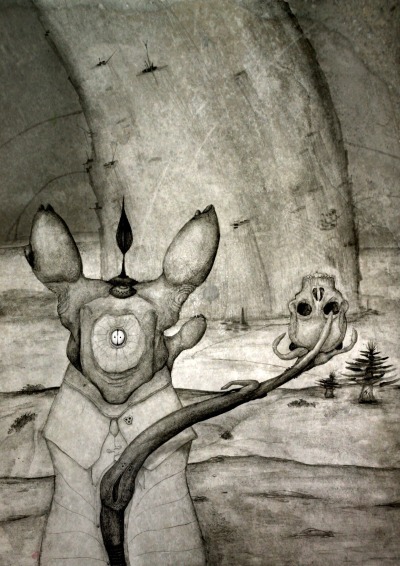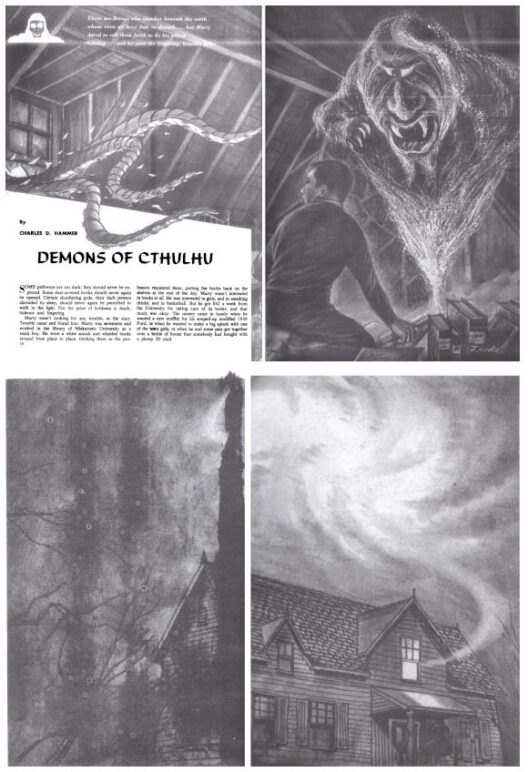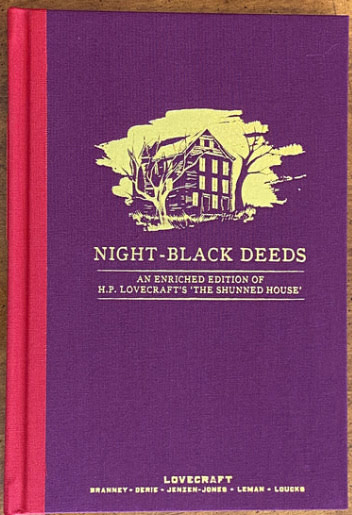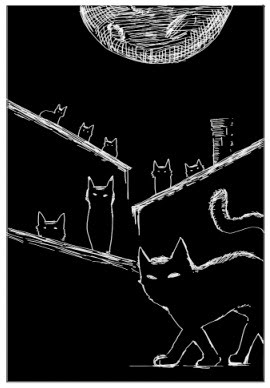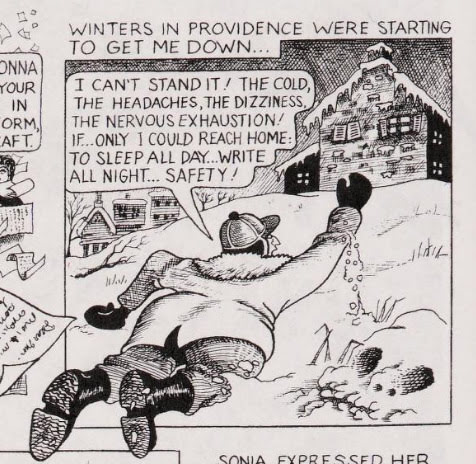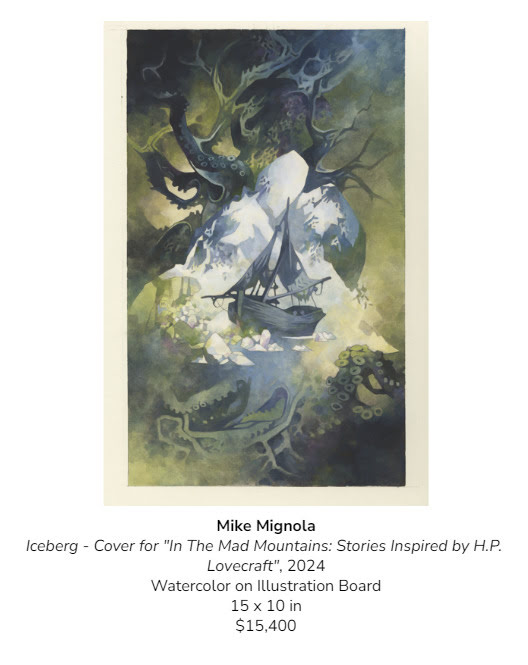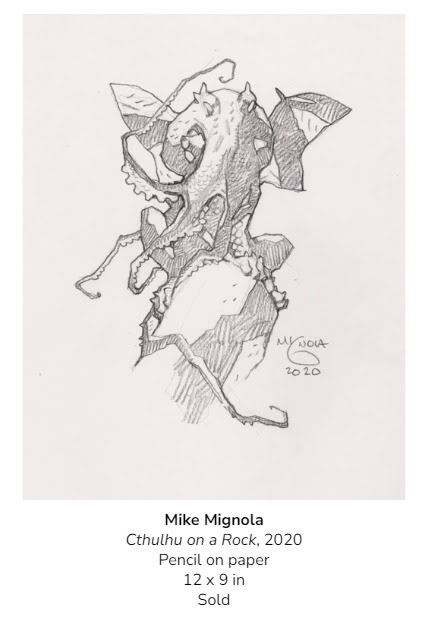HPLinks #11.
“… fat boars we shall tear limb from limb with our hands, and gnaw with our sharp teeth. Great Thor, but this is life! We ask no more! We know the cool of deep woods, and the spell of their gloom and the things void of name that lurk or may lurk in them. Bards sing them to us in the dark with great hoarse voices when the fire burns low and we have drunk our mead.” — Lovecraft empathising with the pre-Christian forest-life of the Germanic tribes, in a Christmas letter to Frank Belknap Long in December 1923. Selected Letters Vol. 1, page 275.
* There’s now a firm date for the forthcoming German book Kulturelle Spiegelungen zwischen H.P. Lovecraft und Deutschland (‘Cultural Reflections: H.P. Lovecraft and Germany’). Amazon UK lists it as 11th November 2024 in hardcover from WGB Academic. It appears to focus around the… “German influences [that] are extremely numerous in the writer’s stories, poems, letters and essays, [plus the] German characters appearing in the tales [and] Lovecraft as influenced by the First World War”. One wonders if it also considers the correspondents and friends who had various links to Germany in the inter-war years?

* In The Cape Cod Chronicle, “Chatham Orpheum Theater To Conjure Up ‘Strange Magick'”. Being an interview with the maker of a new film Strange Magick: A Documentary which reportedly strains to bring Lovecraft and the occultist Aleister Crowley together in history. Though billed as a ‘documentary’, from what I’ve read it seems to be best viewed as a ‘what if’ movie? For instance, the interview notes the source book used for Crowley in the USA, Secret Agent 666, which centres on Crowley in 1914 – 1919. We learn there that Crowley wrote columns for such [pro-German] weekly newspapers as The Fatherland [and in one of these] he is said to have “sowed rationalizations for destroying the Lusitania” (i.e. the notorious sinking of a British passenger ship). A paragraph or two after these apparent facts the reader is also given the name of Crowley’s propagandist… “employer, George Sylvester Viereck”. This combination of published sentiment and infamous paymaster would have made Crowley forever anathema to Lovecraft, even if they had indeed met or corresponded somehow. There is talk by the movie’s makers of “Lovecraft, Crowley’s and Little’s acquaintanceship”, but I’m uncertain as yet if it’s claimed that Crowley and Lovecraft actually met in person or perhaps corresponded.
* A documentary film directed by the German director Werner Herzog, which had escaped my notice, Fireball: Visitors from Darker Worlds (2020). The last film I saw from him was the Cave of Forgotten Dreams (2010, documentary on the mysteries of Europe’s famous prehistoric cave-paintings) and I’m glad to find there’s another like it. His new film takes the topic of flaming meteorites, ‘shooting stars’, deep-impact craters and more. A new open-access paper in the journal RuMoRes draws attention to a possible Lovecraft influence on this film. Since it observes that both men… “use similar settings, such as remote places, frozen lands or volcanic areas, and extreme natural phenomena, such as the fall of meteorites”.
* New to me, Lovecraft et la Politique (2023), in French. A translated selection of his writing on politics and political philosophy, plus the new essay ‘Lovecraft: the Marx of nightmares’. Currently available in paper.
* New in the July 2024 edition of the journal Science Fiction Studies ($ paywall) “The Non-Euclidean Gothic: Weird Expeditions into Higher Dimensions and Hyper-Matter with H.P. Lovecraft”… “The first part of the paper reviews the suite of mathematical and scientific discoveries informing Lovecraft’s treatment of higher-dimensional and Non-Euclidean geometries in his mythos.”
* S.T. Joshi’s blog has a long report on a recent trip to Mexico. During which he bravely battled with our future insect-overlords, in the form of eating a dish of fried grasshoppers (“not terribly appealing”). He also endures a long trek to reach an “immense R.H. Barlow Archive”. There he was able to obtain addresses for, and then to see on Google StreetView, two former Barlow residences in Mexico.
* Joshi also reports that his own ‘Lovecraft as character’ tale “In His Own Handwriting” is now a free and authorised HorrorBabble audiobook on YouTube (36 minutes). It turns out to be a fun combo of the ‘shaggy dog’ / ‘what if?’ tale, written for an audience of learned Lovecraftians. Though with an ending I felt might have had more punch.
* S.T. Joshi’s chunky annual journal Penumbra No. 5 (2024) is now available from Hippocampus Press. Includes, among others, “John C. Tibbetts present[ing] an interview and analysis of the weird work of Brian Aldiss”, the 1960s/70s British science-fiction writer.
* An Interview with Eric Williams, who recently collected the best translations published by the old Weird Tales magazine, in a new book now available called Night Fears: Weird Tales in Translation (2023). In the interview he states…
“Weird Tales continues to dominate pop culture to this day. [Creators] all have Weird Tales in their DNA.
True. And Lovecraft in particular, who is often found to be thoroughly intertwined, once you know what you’re looking for. For instance I recently encountered Harlan Ellison’s two-issue stint with The Incredible Hulk (Avengers #88 crossing over into Incredible Hulk #140), which to my surprise opened with a Lovecraft quote and then went on to gleefully and freely mix several Lovecraft story-ideas (from “Cthulhu” the swamp-bachanal scenes, hideous idols connected across cultures, south Pacific co-ordinates, from “Pyramids” the giant paw, and for good measure Harlan also threw in an evolved-insect ‘space god’ who serves the unseen ‘Dark Ones’. There’s even a 1930s pulp ‘Lost Race tale’ princess).
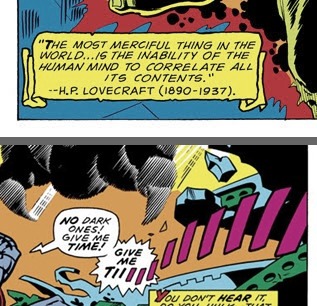
Most of the nods-to-Lovecraft would have sailed over the heads of most readers at that time, unless they knew their Lovecraft as early as 1971. And I suspect that Harlan dashed off this creaky collage of a story in an hour or two. But it’s fun on the page, and is an example of a nod to Lovecraft in the classic Marvel Comics. I must have read it as a boy, though it seemed new to me in 2024.
* On DeviantArt from the artist, a sample preview page for the first Randolph Carter graphic novel. This made me look again, and I now see a January 2025 publication date for a Vol. 2.
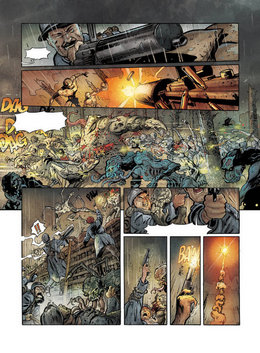
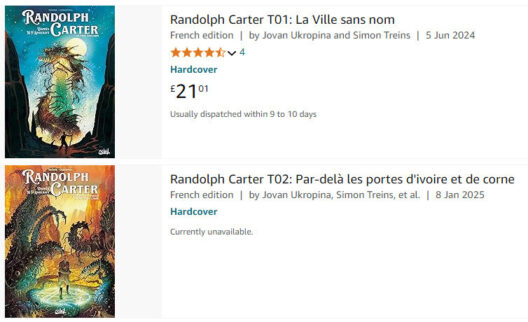
* Also on DeviantArt, an impressive new AI-generated image from Anavrin-ai…

* New to me, Amazing Figure Modeler magazine #68 (2020), which was a Lovecraft special. The issue can still be picked up for a reasonable price on eBay…
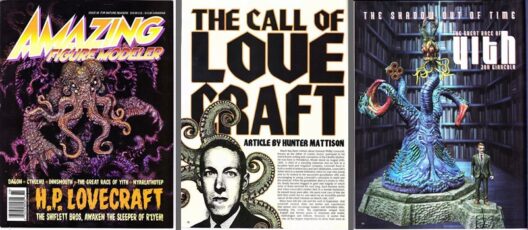
* The Great Old Ones to release new studio album Kadath in January 2025. The concept album by the French metal band offers a… “descent into the Dream Cycle [of Lovecraft…] an odyssey through the realms that teeter between fantastical wonder and cosmic dread.” On YouTube there’s already a sample track, “Me, the Dreamer”.
* In the U.S., a university “Music Department hosts an eldritch performance”. This being a 60 minute opera/reading-performance of “The Dunwich Horror”, with an ensemble of classical musicians, no less. Sounds to me like they’re building up to a fully fledged screeching-and-wailing costumed opera performance, at some point in the future.
There were three scenes within the performance, each being about 20 minutes long. Each scene had their own setting and characters, with the performers rotating off of the stage in accordance with their characters in the opera. They also had costumes fitting their unique characters, and acted along with the words being sung.
* The blog Bibliotheque de H.P. Lovecraft looks at The Gamekeeper at Home: Sketches of natural history and rural life (1878), a book owned and presumably read by Lovecraft in the latter part of the 1920s. Though not listed in my old copy of Lovecraft’s Library (update: it’s in the 2024 edition), and one has to wonder if the apparent HPL name inscribed in the book may actually be another example of Loveman’s late penmanship. The book detailed the hunting and shooting life of the English countryside, through the eyes and work of a gamekeeper, in the 1870s. Unmentioned in the blog post, though some readers will recall it, is that Lovecraft had once been a crack shot with a rifle and once had a large collection of guns. Thus the book would have been doubly appealing to the Anglophile Lovecraft.
* Coming soon, a single-volume collection of Two-Gun Bob’s Adventures in Science Fantasy, checked against the original manuscripts and published by the REH Foundation.
* The new Daniel Crouch Rare Books Catalogue XXXIX: “I wisely started with a map…” – a celebration of fictional cartography (2024). £50 in paper, or you can download the sumptiously illustrated PDF for free.
* At Tentaclii this week, I note “Some changes at Amazon”. Where did all those Warehouse Deals on books go? Turns out they’re still there, but hidden and only accessible via a special kind of search. You’re welcome.
* And finally, talking of affordable books for scholars, The Internet Archive is back online. No personal logins at present, so you can’t yet change your password to a new secure one. Or upload new items. Or ‘search inside’ the text of books and magazines. In the meanwhile I’m sure they’d welcome a ‘happy to see you back’ donation.
— End-quote —
“… Cyclopean phantom pinnacles flowering in violet mist, surging vortices of alien life coursing from wonder-hidden springs in Samarcand and Carthage and Babylon and AEgyptus, breathless sunset vistas of weird architecture and unknown landscape glimpsed from bizarrely balustraded plazas and tiers of titan terraces, glittering twilights that thickened into cryptic ceilings of darkness pressing low over lanes and vaults of unearthly phosphorescence…” — H.P. Lovecraft, recalling his early experience of the sunset cityscapes and towers of New York City, in a letter of 18th January 1930.



